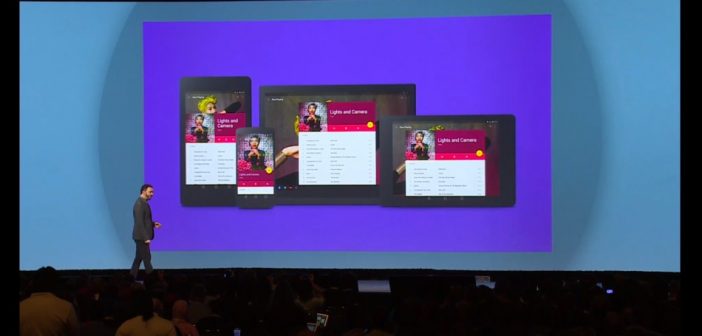Google kicked off the event with Android One, a new hardware reference platform that will offer verified vendors to make it easier for OEMs to build devices. This appears to be the Android Silver program we have heard about, verified OEM smartphones will get quick updates and might be entitled to more goodies.
We then got to hear about Android L, unlike the previous versions that came with a number and name, L is one letter and references a change to the whole of Google’s ecosystem. Android L will be available on mobiles, tablet, TV, cars, wearables and even on Chromebooks, offering the same design language.
Android L brings a whole new design language to the platform, called Material Design. This is skeuomorphism without all of the ugliness, Google has put effort into vivid and fluid animations, moving from one activity to another without the need for a loading screen.
Animations were a big part of the event, part of the movement to more fluid animations comes from the new ART runtime. Google has dropped the age-old Davlik runtime in favor of ART and this will enhance both CPU and GPU performance, bolstering speeds and fluidity between apps.
Alongside CPU optimisation, the new Android Extension Pack will allow developers to get creative with graphics. Google showed off the Unreal Engine 4 on an Android device, similar to iOS8 presentation where the guys from Epic Games showed off Unreal Engine 4.
Google announced new APIs for BYOD devices, allowing users to not have to carry two devices around at all times. The API includes help from Samsung Knox, the security platform Samsung built for their own devices. Drive For Work was announced for companies, with unlimited storage for $10 per user, per month.
At the end of the preview, Sundar Pichai, head of Android and Chrome, said the goal is to focus on four things: contextual information, voice recognition, seamless integration and mobile first. This is what Android L stands for and there is a lot of new interfaces for developers to work on.


